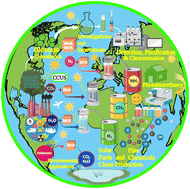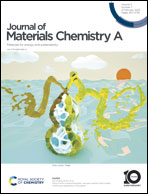Review: applications of the functional photocatalysts BiOX (X = Cl, Br, I) for clean energy, the environment, and future photobiorefineries
Abstract
Developing clean and sustainable alternative energy sources is tremendously desirable. As a typical sustainable energy component, solar energy has attracted intensive efforts to explore its application. Among the energy sources, photocatalysis is a high-efficiency ecofriendly technology. Recently, BiOX nanocomposites have been widely employed in clean energy, water splitting, H2 and NH3 generation, CO2 transformations, pollutant remediation, and the selective oxidation of alcohols into respective aldehydes. However, the photocatalytic performance of pristine BiOX is relatively low, mainly due to its limited visible-light-absorption range and high exciton recombination rate, which restrict its practical application. Therefore, modifying the morphologies, band structures, and photoelectric properties are required to enhance the photocatalytic performance. In this review, we first explored its structure, preparation methodologies, strategies for fabrication, and tuning their band edges and photoelectrical properties. Then, photocatalytic reaction mechanistic insights were explored. Afterward, the applications for sustainable energy and environmental remediation were evaluated. Last but not least, the feasibility for the photocatalytic volarization of lignocellulosic biomass-derived feedstocks into fine chemicals was evaluated. The summarized progress in developing BiOX nanocomposites as high-efficiency photocatalysis can enlighten the research looking to exploit solar energy.

- This article is part of the themed collection: Journal of Materials Chemistry A Recent Review Articles


 Please wait while we load your content...
Please wait while we load your content...